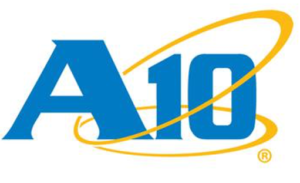November 2017 IETF Journal Now Available Online
The November 2017 issue of the IETF Journal is now online at https://www.ietfjournal.org/journal-issues/november-2017/. With IETF 100 in Singapore starting this coming weekend, this is the perfect time to get caught up on what’s been happening in the world of Internet standards lately. (Starting next week, you can also learn more about the Internet Society’s work at IETF 100 via our series of Rough Guide blog posts.)
In this issue, you’ll learn about implementation work taking place in the Human Rights Protocol Considerations Research Group, the latest security updates to Network Time Protocol, new email-related Working Groups JMAP and EXTRA, as well as the important coding work that took place as part of the IETF Hackathon.
Our regular columns from the IETF, IAB, and IRTF chairs and coverage of the Birds-of-a-Feather meetings and presentations from the Applied Networking Research Prize winners wrap up the issue.
There will be print copies available at IETF in Singapore, the email version will hit subscribers’ inboxes in the coming days, and print subscribers will receive their issues shortly thereafter.
This issue marks the final hardcopy version of the IETF Journal. As we explain in “We’re Continue reading
LavaRand in Production: The Nitty-Gritty Technical Details
Introduction


Courtesy of @mahtin
As some of you may know, there's a wall of lava lamps in the lobby of our San Francisco office that we use for cryptography. In this post, we’re going to explore how that works in technical detail. This post assumes a technical background. For a higher-level discussion that requires no technical background, see Randomness 101: LavaRand in Production.
Background
As we’ve discussed in the past, cryptography relies on the ability to generate random numbers that are both unpredictable and kept secret from any adversary. In this post, we’re going to go into fairly deep technical detail, so there is some background that we’ll need to ensure that everybody is on the same page.
True Randomness vs Pseudorandomness
In cryptography, the term random means unpredictable. That is, a process for generating random bits is secure if an attacker is unable to predict the next bit with greater than 50% accuracy (in other words, no better than random chance).
We can obtain randomness that is unpredictable using one of two approaches. The first produces true randomness, while the second produces pseudorandomness.
True randomness is any information learned through the Continue reading
Randomness 101: LavaRand in Production
Introduction


Courtesy of @mahtin
As some of you may know, there's a wall of lava lamps in the lobby of our San Francisco office that we use for cryptography. In this post, we’re going to explore how that works. This post assumes no technical background. For a more in-depth look at the technical details, see LavaRand in Production: The Nitty-Gritty Technical Details.
Background
Randomness in Cryptography
As we’ve discussed in the past, cryptography relies on the ability to generate random numbers that are both unpredictable and kept secret from any adversary.
But “random” is a pretty tricky term; it’s used in many different fields to mean slightly different things. And like all of those fields, its use in cryptography is very precise. In some fields, a process is random simply if it has the right statistical properties. For example, the digits of pi are said to be random because all sequences of numbers appear with equal frequency (“15” appears as frequently as “38”, “426” appears as frequently as “297”, etc). But for cryptography, this isn’t enough - random numbers must be unpredictable.
To understand what unpredictable means, it helps to consider that all Continue reading
Rough Guide to IETF 100 – Slinging Standards in Singapore
It’s time for the third and final IETF meeting of 2017. Starting on Sunday, 12 November, the Internet Engineering Task Force will be in Singapore for IETF 100, where about 1000 engineers will discuss the latest issues in open internet standards and protocols. All this week, we’re providing our usual Internet Society Rough Guide to the IETF via a series of blog posts on topics of mutual interest:
- Internet of Things (IoT)
- Routing Infrastructure Security Resilience
- IPv6
- DNSSEC, DANE and DNS Security
- Identity, Privacy, and Encryption
All these posts can be found on our blog and will be archived through our Rough Guide to IETF 100 overview page.
Here are some of the activities that the Internet Society is involved in and some of my personal highlights.
IETF Journal
Catch up on highlights from IETF 99 in Prague by reading the IETF Journal. You can read all the articles online at https://www.ietfjournal.org, or pick up a hardcopy in Singapore.
This issue marks the final hardcopy version; starting in 2018, we’ll be shifting our focus to longer-form articles online and via our Twitter and Facebook channels. In the meantime, this issue has articles on the Human Rights Continue reading
Perfect locality and three epic SystemTap scripts
In a recent blog post we discussed epoll behavior causing uneven load among NGINX worker processes. We suggested a work around - the REUSEPORT socket option. It changes the queuing from "combined queue model" aka Waitrose (formally: M/M/s), to a dedicated accept queue per worker aka "the Tesco superstore model" (formally: M/M/1). With this setup the load is spread more evenly, but in certain conditions the latency distribution might suffer.
After reading that piece, a colleague of mine, John, said: "Hey Marek, don't forget that REUSEPORT has an additional advantage: it can improve packet locality! Packets can avoid being passed around CPUs!"
John had a point. Let's dig into this step by step.
In this blog post we'll explain the REUSEPORT socket option, how it can help with packet locality and its performance implications. We'll show three advanced SystemTap scripts which we used to help us understand and measure the packet locality.
A shared queue
The standard BSD socket API model is rather simple. In order to receive new TCP connections a program calls bind() and then listen() on a fresh socket. This will create a single accept queue. Programs can share the file descriptor - pointing Continue reading
OpenStack now featured in Cumulus in the Cloud
First of all, we’re thrilled to announce that today we launched OpenStack with Cumulus in the Cloud. That means that you can now test out Cumulus Networks technology with an OpenStack environment easily and at zero cost to you.
I’ve written previously about Cumulus In The Cloud (CitC) when we first released it a month ago with Mesos as the initial release flavor. Since then, JR Rivers and his team have been diligently working on adding additional flavors to the CitC offering. I could not have been happier to hear the good news that they had integrated an OpenStack solution with the cloud testing framework.
I immediately launched my own free instance of Cumulus in the Cloud using the standard steps. I was greeted with a new option where I could pick the flavor of CitC I wanted to initiate:

Since I had already experimented with Mesos, I was eager to tinker with OpenStack to better learn this technology.
To be upfront, I am not an OpenStack expert. I have been diligently learning it over the past six months ever since a majority of my customer engagements have involved private cloud deployments leading with OpenStack. As a network engineer first, Continue reading
Introduction to Point to Point Authentication : PAP and CHAP protocols
PAP and CHAP is one of the basic and most important topic for CCNA candidates or the freshers who are going to work on the Point to point networks.
Before we are starting with the PAP and CHAP protocols, I would like to tell you that PAP and CHAP is the authentication procedure in Point to point network. So if you are using Point to point networks in your architecture you should opt for PAP or CHAP protocols as per the design required.
Below is the example showing the pictorial representation where we are defining the acceptance and the refusal of the connection in both the cases.
PAP- Password Authentication Protocol
So PAP is a password-based authentication protocol used by Point to Point Protocol (PPP) to validate users. PAP generally consider as a very basic two-way process. There is no encryption. The username and password are sent in plain text. If it is accepted, the connection is allowed.
Introduction to ACI Multi-Site Fabric Design Network
Introduction to Cisco ACI stretched fabric and ACI Multi-pod Fabric Designs
So in short, you now understand the Cisco single-pod, Cisco ACI stretched fabric and Cisco ACI multi-pod fabric design. Now we are going to talk about the next level of Cisco ACI deployment model and this model is called as Cisco ACI Multi-site fabric design.
Cisco ACI Multi-site Fabric Network Design
Introduction to Cisco ACI stretched fabric and ACI Multi-pod Fabric Designs
Earlier Cisco ACI multi-pod environment we were doing the ACI stretched Fabric design but then Cisco come up with the solution called as Cisco ACI multi-pod.
What is Cisco ACI Multi-pod ?
Well ACI multi-pod is a kind of ACI stretched Fabric design with more benefits and features. In simple words we can say that ACI multi-pod is a multiple ACI fabrics that is under control of single management or administration.
What is the key difference of ACI stretched fabric design and ACI multi-pod ?
Let's talk about the ACI stretched fabric design, Let us suppose we have two ACI fabric design where we have Spine-Leaf architecture. One is ACI-I and other is ACI-II, if you are going to connect the leaf switches of ACI-I with the spine switches of ACI-II and leaf switches of ACI-II with spine switches of ACI-I makes ACI Stretched fabric design. Below diagram shows the best way of Cisco ACI stretched fabric design between three ACI fabric networks.
 |
| Continue reading |
General – Advice on Numbering Policies in Networking
There are several situations where we need to write some form of policy such as QoS, routing policies used in for example redistribution, filtering and policy-based routing, dot1x and so on. Lately I had to update a policy used by the master controller (MC) in an IWAN design. What are some important things to consider when writing the policy?
The number to start with – If you start with the number one then it won’t be possible to insert anything above this line at a later time. How certain are you that you will never have to put anything before the starting line? My recommendation is to start with a higher number such as 100.
Space between each line – Don’t number your lines 100, 101, 102, 103 and so on. Leave some more space between each line in case you have to insert something later between two lines. A spacing of 10 should be fine for most situations.
Go from most granular to least granular – The policy should go from as granular as possible to the least granular at the end. If you have a statement that is too broad you may catch more than you expected even Continue reading
NodeJS Quick Reference
Comment Variable String Integer Boolean Array Object For Loop // Alternate syntax for (var i in things) // Iterate dictionary' ) }} While Loop If, Else if, Else Function Class set stuff(stuff) get stuff() showStuff() }' ) }} continue reading
Introduction to Next Generation Network Technology: IOT- Internet Of Things
The Use of the Asymmetric routing
Marvell in Talks to Buy Cavium, Creating $14B Chipmaker, Report Says
 It follows reports that Broadcom is planning an unsolicited bid for chipmaker Qualcomm.
It follows reports that Broadcom is planning an unsolicited bid for chipmaker Qualcomm.
Hive Mind, Help Me Out with A10 AXAPI?
Dear Internet,
I am writing some automation code in Go to create client-ssl templates on an A10 load balancer running AXAPI version 2. It’s going as swimmingly as it can with the v2 API, but one area of non-complete API coverage has led to another issue and I’m wondering if anybody has seen the same thing.

Background – Disabling SSLv3
SSL access to VIPs on the A10 load balancer is controlled by means of client-ssl templates which define which certificates should be presented and the ciphers and protocols supported for the incoming connection. In this case therefore, disabling SSLv3 is accomplished in the client-ssl template (unfortunately there is no global switch to turn SSLv3 off by default). A typical template might look like this in the configuration:
slb template client-ssl mytemplate cert my_certificate key my_private_key chain-cert some_chain_cert disable-sslv3 !
As it turns out, all aspects of the client-ssl template are exposed via the API except for “disable-sslv3” which shows neither as a returned property of the template (highly annoying), nor as a property which can be set when creating a template (also annoying). Thus to replicate a template like the one above, I choose to set everything I can using the Continue reading
Broadcom Plans Unsolicited Offer on Qualcomm, Report Says
 This follows yesterday's news that Broadcom is relocating its headquarters to the U.S.
This follows yesterday's news that Broadcom is relocating its headquarters to the U.S.
Cumulus content roundup: November
Saddle-up and get ready to ride — the Cumulus content roundup is back to take you on a journey through the best in industry news! It’s been a great month for innovation and forward-thinking, here at Cumulus Networks and beyond. From clouds to chassis to microservices, we’ve got the latest in data center networking trends covered. Check out what’s going on, and let us know what you think!
The best from Cumulus:
Private vs. public cloud white paper: Trying to decide which cloud is best for your organization? This white paper weighs the costs and benefits of private, public, and hybrid clouds for you. Read more so you can pick the perfect cloud.
Cumulus Networks inducted into JPMorgan Chase Hall of Innovation: We are humbled and honored to announce that Cumulus Networks has been inducted into the JPMorgan Chase Hall of Innovation. Read this blog to see what it takes to be an innovator.
Technical video and demo: NetQ: This video is perfect for anyone searching for a technical breakdown and demonstration of NetQ’s immense capabilities. Watch here, and see the awesome power of NetQ for yourself.
Choosing your chassis: This blog post provides an up-close Continue reading
Fujitsu and NetApp Partner on Converged Infrastructure
 NetApp teamed up with Cisco on converged infrastructure seven years ago.
NetApp teamed up with Cisco on converged infrastructure seven years ago.